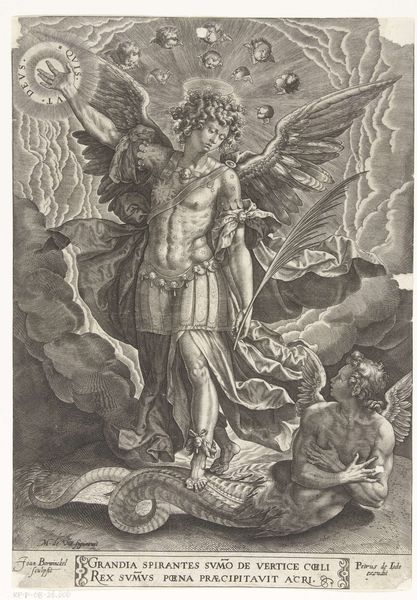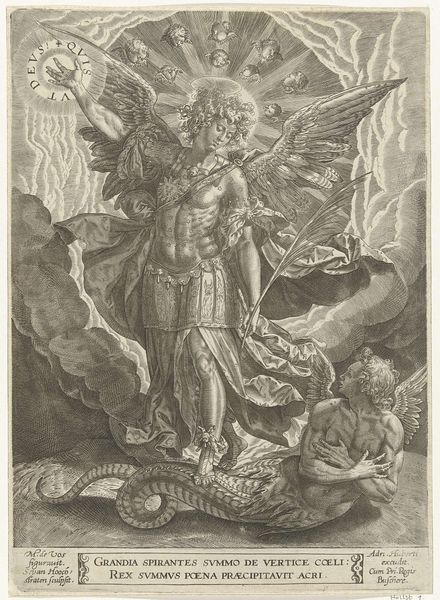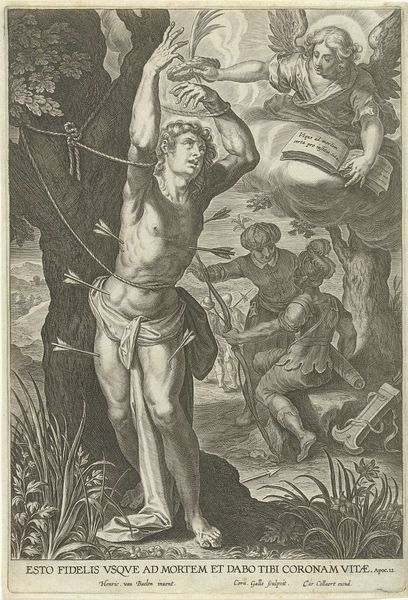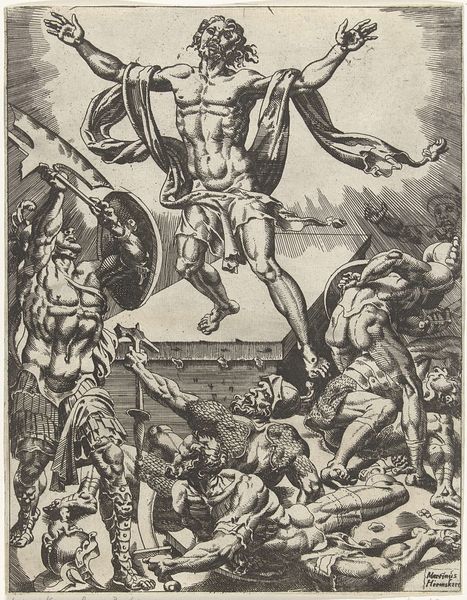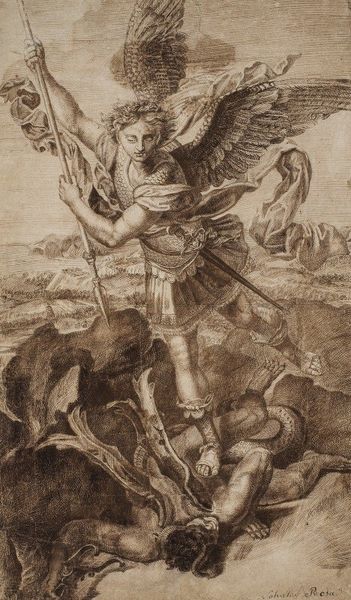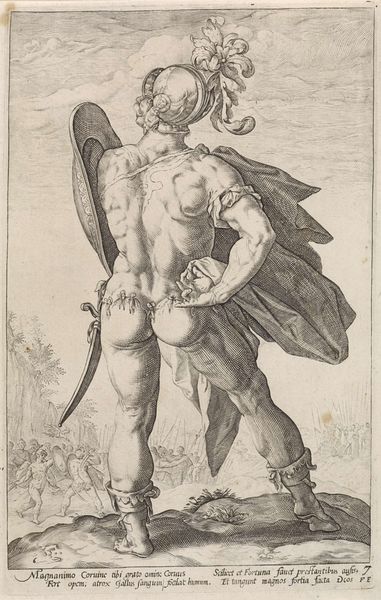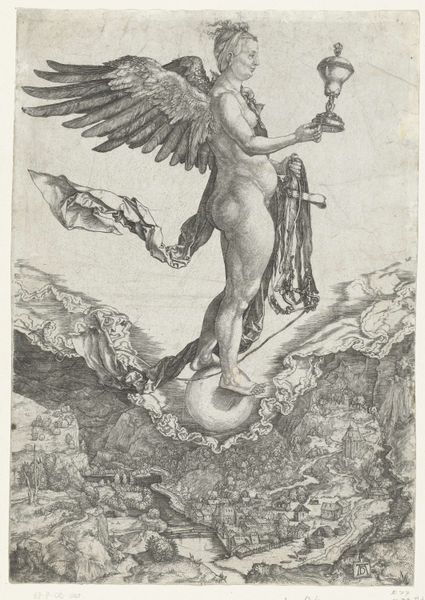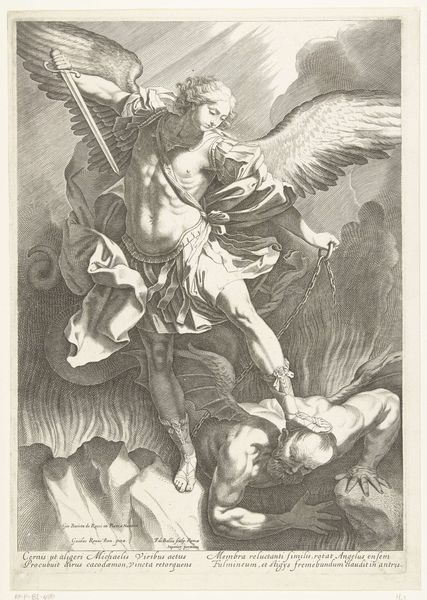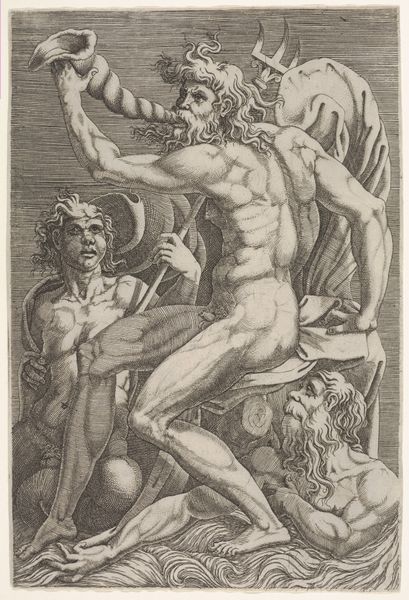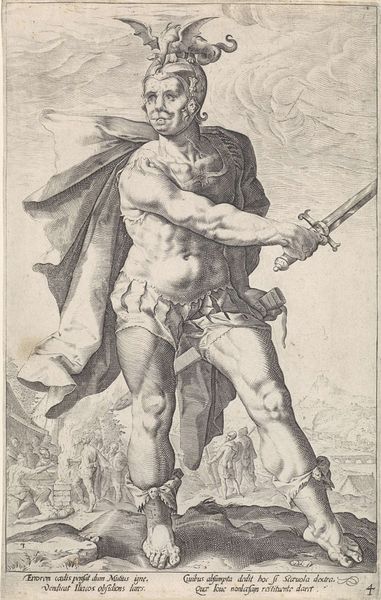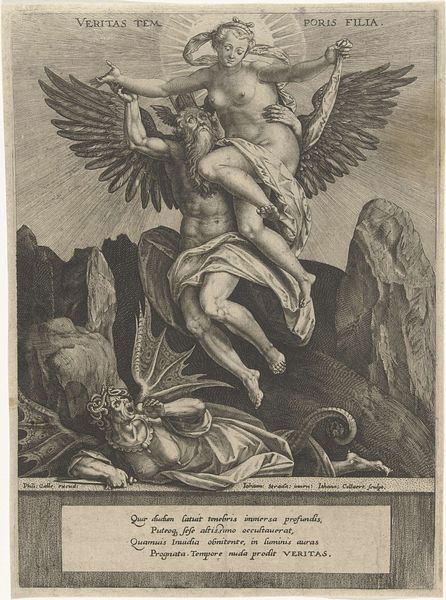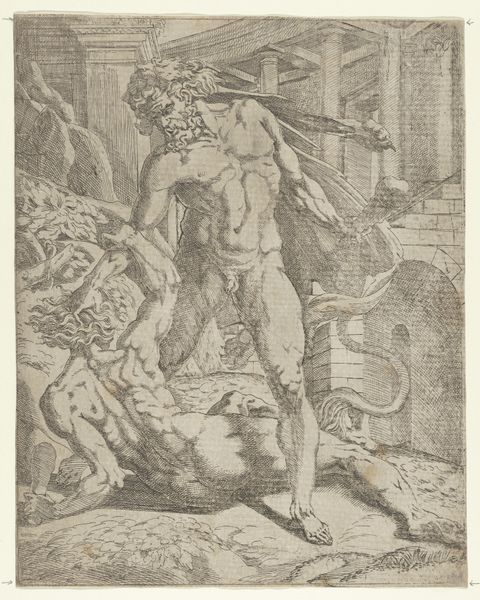
print, intaglio, engraving
#
portrait
#
allegory
# print
#
intaglio
#
caricature
#
figuration
#
11_renaissance
#
portrait drawing
#
history-painting
#
italian-renaissance
#
engraving
Dimensions: height 262 mm, width 190 mm
Copyright: Rijks Museum: Open Domain
Curator: Here we have Marco Dente’s “Aartsengel Michaël,” a compelling engraving dating back to the early 16th century, somewhere between 1500 and 1532. Editor: My immediate feeling is… unsettling power. The detail is incredible, especially in the wings, but it's the defeated figure at Michael’s feet that really grabs you. The way he is rendered, with the goat horns indicating it’s an embodiment of the Devil. Curator: Dente, though not always widely known today, played a significant role in disseminating the art of the Italian Renaissance through prints. This work is a fascinating example of that, showcasing the artistic influence of the time. He borrows the work from Raphael in his depiction of Saint Michael. Editor: Absolutely, and understanding the context—the intense religious and political climate of the early 16th century—is crucial. Images like this weren’t just art; they were tools. Reinforcing the power of the church, conveying specific moral messages. Curator: Precisely. Saint Michael, in this context, embodies the triumph of good over evil, a key theme within Renaissance art and broader society at that time. These prints were accessible; they could be circulated and replicated, making them powerful visual tools for shaping public perception and ideology. Editor: Thinking about its visual rhetoric, that spear pointed downwards... it's an unmistakable image of domination. There's something about the defeated figure's contorted pose that speaks volumes about subjugation. Who held the power, who didn't. Even something about colonization itself. Curator: Interesting connection, especially given the political power wielded at the time in terms of conquests in Europe. Considering where it is housed today—at the Rijksmuseum—it encourages us to examine how museums themselves are spaces where these power dynamics play out, influencing what narratives are preserved and how. Editor: I’d agree, particularly around the themes of historical context. This artwork demands a continued analysis beyond just its aesthetic qualities, inviting deeper exploration of the stories it represents and the systems that uphold or challenge these dominant narratives. It is more than aesthetic; it becomes a cultural and political symbol. Curator: Indeed, a potent reminder of the intersections between art, power, and cultural memory. Thank you for providing this different perspective.
Comments
No comments
Be the first to comment and join the conversation on the ultimate creative platform.

